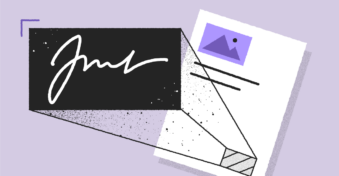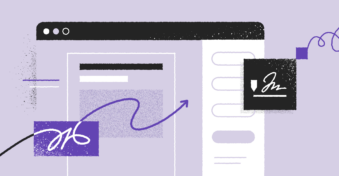Indemnity forms and waivers are essential legal documents that can help to protect a business against certain legal actions. Despite common misconceptions, these two terms are different and are used in certain circumstances. To benefit from these documents, businesses should understand the differences so that they can use them appropriately. In this article, we’ll explore the key differences between these two legal forms.
What’s an Indemnity Form?
An indemnity agreement is a legal contract that protects a business or service from liability in certain situations. An indemnity form protects the business, in this case from lawsuits, damages, and claims from third parties. These are essential for any business that offers a product or service that has some risk associated with its use.
There are many businesses where the use of an indemnity form or indemnifying clause is essential. For example, skydiving is an activity that has clear risks associated with it. Therefore a skydiving service provider will have all clients sign an indemnity form wherein the client acknowledges the risks and agrees to exempt the business from any legal responsibility should something go wrong.

However, there are other types of businesses or services where the reason for an indemnity form can be unclear. For example, if you hire a catering company for an event you don’t consider this a high-risk activity. However, the company you use will most likely include an indemnification clause to protect themselves against certain situations such as allergic reactions, etc.
Having an indemnification clause in your contracts is recommended even when you consider your business as low-risk. However, businesses should be aware that an indemnification clause doesn’t protect the business against gross negligence or intentionally harmful acts.
What Clauses Should Be Included in an Indemnity Form?
The indemnification clause in your waivers or other legal contracts can vary according to your business and the potential risks involved. This is part of what makes indemnity forms and waivers so difficult to set up. There’s, unfortunately, no one-size-fits-all clause that businesses can just add to protect themselves.
An indemnity or waiver should include the following key terms:
- Governing law and jurisdiction
- Indemnification clause
- Scope of coverage
- Indemnification exceptions
- Notice and defense of a claim
- Settlement and consent clause
- Enforcement
- Duration
Governing Law and Jurisdiction
Indemnity laws vary from country and even state. As such, you should be clear on the regulations in the area your business operates. Your waiver or indemnity form should include the state law that governs the agreement.
Indemnification Clause
If you’re setting up your indemnity forms and waivers you should use concise language. The risks should be outlined very clearly so that the person signing isn’t left with any uncertainty regarding potential dangers or damages. In this situation, it’s best to write in a way that’s easy to understand by the reader instead of flooding the clause with overly legal language. There have been cases in the past where lawsuits were brought forward because the indemnification clause used was too general or ambiguous.
Scope of Coverage
These legal forms should outline the extent of protection that the business is entitled to. When considering your scope of coverage you should only include liabilities that are caused by your business’s actions.
Indemnification Exceptions
This section should outline any situations where the indemnity form will not protect the business. This is usually in the case of gross negligence, unlawful actions, situations where the business benefited or if the business intentionally acted unreasonably.
Notice and Defense of Claim
Your indemnity form should also outline how the affected party will give the business notice of a claim or dispute. This section could also detail the steps of how the claim can be defended.
Settlement and Consent Clause
This section needs to clarify how both parties will get each other’s consent when settling a dispute or claim.
Enforcement
This section will explain how each party can enforce the indemnification clause.
Duration
This section will specify how long the rights and obligations of each party will remain in place.
What’s the Difference Between an Indemnity Form and a Waiver
The term indemnity form is often used interchangeably with liability waiver. This is because all liability waivers will include an indemnification clause. This clause protects the business against legal action. It’s because of this that there’s confusion between an indemnity form and a waiver.
The biggest difference between these two legal forms is how the ownership of responsibility is transferred. In an indemnity form, the rights are typically released to another party. This means that the business places the responsibility for certain actions on the party using the service. In this case, the client is responsible for understanding the risks associated and they take on that liability. Alternatively, in a waiver, these rights are waived and fall away completely.
Any contract can include an indemnification clause, but that does not make them a waiver. Similarly, a waiver will also include this same clause to protect them from any liability. Waivers are typically used by companies with high-risk services, such as services offering skydiving, scuba diving, or any other activity that includes some form of risk. Alternatively, an indemnity form can be used by other businesses with lower risks. Often simply including an indemnification clause in your contract or terms and conditions is enough for these situations.
Final Thoughts
All companies should include an indemnification clause to protect their business. This is even more important for businesses that offer higher-risk services. However, to create the right legal document to protect your business from damages and loss, you need to understand the differences between indemnity and waivers.
If you’re looking for a program to assist with creating and sending waivers, we suggest you have a look at PandaDoc Waivers. This microapp is the ideal tool for you to send your waivers to clients so they can go through them carefully before they sign.


